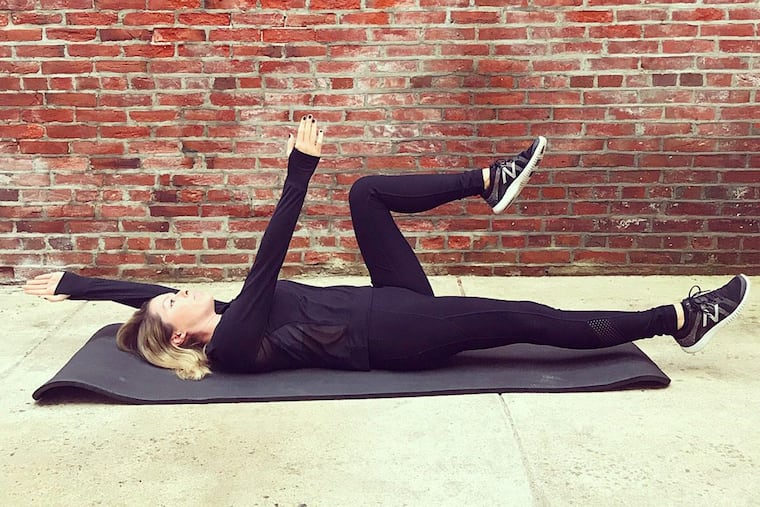3 exercises to ease lower-back pain
To minimize muscle-related pain in your lower back, consider exercises that stretch and strengthen the stabilizing muscles of the hips, core and spine.

Lower back pain can be debilitating. And although it may be tempting to lie petrified and paralyzed in bed, waiting for the pain to pass, keeping your muscles active can be the best method for bringing you back to life.
To minimize muscle-related pain in your lower back, consider exercises that stretch and strengthen the stabilizing muscles of the hips, core and spine. If there is weakness in one of these areas, the related muscles and joints compensate, resulting in imbalances and injuries.
Before practicing the following exercises, consult your physician to ensure these moves are safe for your specific medical condition. These exercises are designed to be performed on days when your back feels healthy, not during muscle spasms or flare-ups.
Standard plank. Your body needs strong core muscles to serve as the stabilizer that supports your hamstrings, spine, abdominal area, and hips. One of the best exercises to target all of these areas is the plank.
Begin in a prone position with your body weight distributed evenly between your forearms and toes. Forearms should be shoulder-width apart.
Tighten your abdominal area as you push through your forearms, elevating your hips off the floor. Your body should form a straight line from your head through your heels.
If you are new to planks, aim to hold this position for 30 to 45 seconds.
As your body gets tired, your hips will want to sag. If you feel that your form is beginning to weaken, lower your body to the floor and rest.
Increase the duration of this exercise for an added challenge.
Side planks. The core area is made up of multiple muscles. Therefore, it is necessary to hit the midsection in more than one way. While the standard plank is essential for building a powerful core, unilateral exercises such as the side plank are helpful for identifying imbalances that can exist on each side of the body. If holding a left side plank is easier than a right side plank, there are strength issues that need to be addressed in order to avoid muscle compensation and injuries.
Start by lying on your side with your feet together and your body weight propped up on your right forearm. Your shoulder must be aligned above your elbow to reduce the risk of shoulder injury.
Contract your abdominal muscles and raise your hips off the floor until your body forms a straight line from your head to your feet. You should feel your obliques (the little muscles lining your abdomen) start to burn within the first 10 seconds. Beginner tip: If you feel that your body cannot hold this position, adjust your form so your body weight is distributed between your knees and forearm.
Hold this position for 30 seconds, then repeat on the opposite side. Remember to breathe throughout this exercise.
Dead bug. The benefits of this exercise are far more appealing than its name. The Dead Bug is a controlled movement that targets the deep muscles responsible for spine stability. Unlike sit-ups and crunches that can put unnecessary strain on your lower back, the dead bug is a spine-supported movement.
Lie on your back with your arms and legs in the air — like a dead bug. Your knees should be slightly bent.
Engage your core muscles by pressing your lower back into the floor and remain in this contracted position for the duration of the exercise.
Slowly and simultaneously lower your right arm and left leg until they are parallel with the floor. Hold for one breath then use your abdominal muscles to return the limbs back to the starting position.
Alternate by lowering the left arm and right leg until they are parallel to the ground, holding for one breath and then returning to the starting stance. Continue this sequence for one minute.
Ashley B. Greenblatt is a certified personal trainer and wellness coach. To learn more, visit ashleyblakefitness.com.